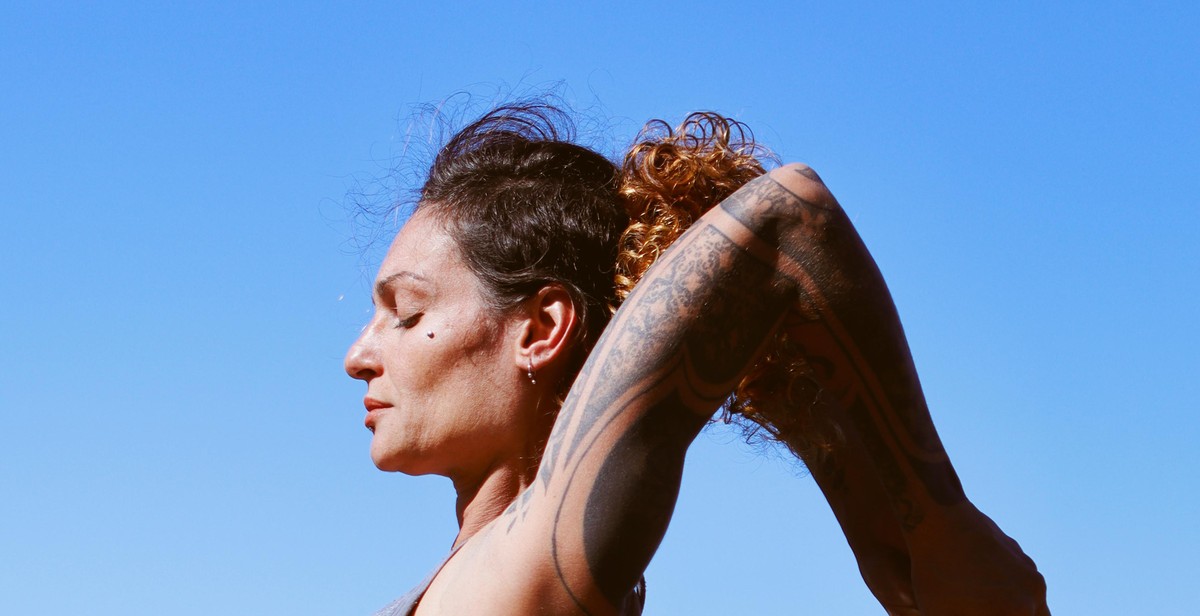How to Practice Yoga: A Beginner’s Guide to Yoga Poses and Meditation
If you are new to yoga, you may be wondering where to start. With so many different styles and poses, it can be overwhelming at first. But don’t worry, practicing yoga is not only for the flexible or the spiritual, it is for everyone. As a professional article writer and experienced yoga practitioner, I am here to guide you through the basics and help you get started on your yoga journey.
The Benefits of Yoga
Yoga is more than just a physical exercise, it is a holistic practice that benefits the mind, body, and spirit. Regular yoga practice can help improve flexibility, strength, balance, and posture. It can also reduce stress, anxiety, and depression, and improve overall well-being.
The Different Styles of Yoga
There are many different styles of yoga, each with its own focus and benefits. Some popular styles include Hatha, Vinyasa, Ashtanga, and Bikram. It’s important to find a style that suits your needs and preferences.
The Basic Yoga Poses
There are many yoga poses, or asanas, but as a beginner, it’s best to start with the basic poses. These include Mountain Pose, Downward-Facing Dog, Warrior I, and Child’s Pose. These poses will help you build a strong foundation and prepare you for more advanced poses.
Ready to get started? Grab your yoga mat and let’s begin!
What is Yoga?
Yoga is a physical, mental, and spiritual practice that originated in ancient India. It involves a combination of physical postures, breathing techniques, and meditation to promote overall health and well-being. The word “yoga” comes from the Sanskrit word “yuj,” which means to yoke or unite.
History of Yoga
The practice of yoga dates back over 5,000 years. It was first mentioned in ancient Indian texts called the Vedas, which were written between 1500 and 500 BCE. Over time, yoga evolved and different types of practices emerged, including Hatha yoga, Ashtanga yoga, and Bikram yoga.
Benefits of Yoga
There are numerous benefits to practicing yoga. Physically, it can improve flexibility, strength, and balance. It can also help with pain management and reduce the risk of injury. Mentally, yoga can reduce stress and anxiety, improve mood, and promote better sleep. Spiritually, yoga can help individuals connect with their inner selves and achieve a sense of peace and tranquility.
| Physical Benefits | Mental Benefits | Spiritual Benefits |
|---|---|---|
| Improved flexibility | Reduced stress and anxiety | Connection with inner self |
| Increased strength | Better mood | Sense of peace and tranquility |
| Better balance | Improved sleep | |
| Pain management |
Overall, yoga is a powerful practice that can improve physical health, mental well-being, and spiritual growth.

Types of Yoga
There are various types of yoga that cater to different needs and preferences. Below are some of the most popular types of yoga:
Hatha Yoga
Hatha yoga is a gentle form of yoga that focuses on breathing techniques and basic yoga poses. It is ideal for beginners and those who want to improve their flexibility and balance. Hatha yoga is a great way to relax and de-stress after a long day at work.
Vinyasa Yoga
Vinyasa yoga is a more vigorous form of yoga that focuses on linking breath with movement. It is a great way to build strength and endurance while improving flexibility. Vinyasa yoga is ideal for those who want to get a good workout while also improving their mental focus.
Ashtanga Yoga
Ashtanga yoga is a challenging form of yoga that follows a specific sequence of poses. It is ideal for those who want to improve their strength and flexibility while also challenging themselves mentally. Ashtanga yoga is a great way to build endurance and improve overall fitness.
Bikram Yoga
Bikram yoga, also known as hot yoga, is done in a heated room to help promote flexibility and detoxification. It follows a specific sequence of 26 poses and is ideal for those who want to improve their overall health and wellness. Bikram yoga is a great way to improve flexibility, reduce stress, and boost the immune system.
| Type of Yoga | Focus | Intensity | Suitable for |
|---|---|---|---|
| Hatha Yoga | Breathing techniques and basic poses | Low | Beginners and those who want to improve flexibility and balance |
| Vinyasa Yoga | Linking breath with movement | Medium | Those who want a good workout while improving mental focus |
| Ashtanga Yoga | Specific sequence of poses | High | Those who want to improve strength, flexibility, and endurance |
| Bikram Yoga | Heated room to promote flexibility and detoxification | High | Those who want to improve overall health and wellness |

Yoga Poses for Beginners
Mountain Pose (Tadasana)
Mountain Pose is a foundational pose in yoga that helps improve posture and balance. To practice Mountain Pose:
- Stand with your feet hip-width apart and your arms at your sides.
- Ground down through your feet and engage your thigh muscles.
- Lengthen your spine and bring your shoulders back and down.
- Take a few deep breaths and focus on grounding down through your feet.
Downward-Facing Dog (Adho Mukha Svanasana)
Downward-Facing Dog is a popular pose in yoga that helps stretch the entire body. To practice Downward-Facing Dog:
- Begin on your hands and knees with your wrists directly under your shoulders and your knees directly under your hips.
- Spread your fingers wide and press into your palms as you lift your hips up and back.
- Keep your knees bent and your heels lifted off the ground.
- Lengthen your spine and reach your tailbone towards the ceiling.
Warrior 1 (Virabhadrasana 1)
Warrior 1 is a powerful pose in yoga that helps strengthen the legs and improve balance. To practice Warrior 1:
- Begin in Mountain Pose with your feet hip-width apart.
- Step your left foot back about 3-4 feet and turn it out at a 45-degree angle.
- Bend your right knee and bring your arms up overhead.
- Keep your hips facing forward and sink deeper into the pose with each exhale.
Tree Pose (Vrksasana)
Tree Pose is a balancing pose in yoga that helps improve focus and concentration. To practice Tree Pose:
- Begin in Mountain Pose with your feet hip-width apart.
- Shift your weight onto your left foot and bring your right foot up to rest on your left inner thigh.
- Press your left foot into the ground and engage your thigh muscles.
- Bring your hands to your heart center and focus on a spot in front of you.
Child’s Pose (Balasana)
Child’s Pose is a relaxing pose in yoga that helps release tension in the body. To practice Child’s Pose:
- Begin on your hands and knees with your wrists directly under your shoulders and your knees directly under your hips.
- Lower your hips back towards your heels and stretch your arms out in front of you.
- Rest your forehead on the ground and take a few deep breaths.
- Focus on releasing tension in your back and shoulders.

Meditation for Beginners
Meditation is a practice that has been around for centuries and has numerous benefits for both the mind and body. Here are some of the benefits:
- Reduces stress and anxiety
- Improves focus and concentration
- Increases self-awareness and emotional intelligence
- Enhances overall well-being
How to Meditate
Starting a meditation practice can seem daunting, but it’s actually quite simple. Here are some steps to get started:
- Find a quiet space where you can sit comfortably without any distractions.
- Choose a time of day when you can meditate consistently, whether that’s first thing in the morning or before bed.
- Set a timer for your desired length of meditation, starting with just a few minutes and gradually increasing as you become more comfortable.
- Sit with your back straight and your eyes closed, focusing on your breath.
- When your mind inevitably wanders, gently bring your focus back to your breath.
- Continue this for the duration of your meditation.
Breathing Techniques
One of the most important aspects of meditation is breathing. Here are a few breathing techniques to try during your practice:
| Technique | Description |
|---|---|
| Deep breathing | Inhale deeply through your nose, filling your lungs completely, and exhale slowly through your mouth. |
| Counted breathing | Inhale for a count of four, hold for a count of four, exhale for a count of four, and hold for a count of four before starting again. |
| Nadi shodhana | Also known as alternate nostril breathing, this involves inhaling through one nostril while closing the other, then exhaling through the opposite nostril. |
Experiment with different breathing techniques to find what works best for you and your meditation practice.
Tips for a Successful Yoga Practice
Yoga is an ancient practice that has become increasingly popular in recent years. It is a great way to improve your physical and mental health, reduce stress, and increase flexibility. If you are just starting out with yoga, here are some tips to help you get the most out of your practice:
1. Start Slowly
Yoga can be challenging, especially if you are new to the practice. Start with beginner-level classes and gradually work your way up to more advanced poses. This will help you avoid injury and ensure that you are practicing safely.
2. Focus on Your Breath
One of the key elements of yoga is breath control. Focus on your breath during each pose, inhaling deeply and exhaling slowly. This will help you stay focused and calm, and will also improve the effectiveness of your practice.
3. Listen to Your Body
Yoga is not a competition. Listen to your body and don’t push yourself too hard. If a pose feels uncomfortable or painful, back off and try a modified version or a different pose altogether.
4. Practice Consistently
Consistency is key when it comes to yoga. Try to practice at least a few times a week to see the most benefits. Even if you only have a few minutes, a short daily practice can help you build strength and flexibility.
5. Find a Qualified Teacher
Yoga is best learned from a qualified teacher who can guide you through the poses and ensure that you are practicing safely. Look for a teacher who has completed a yoga teacher training program and has experience working with beginners.
6. Use Props
Props such as blocks, straps, and blankets can help you modify poses and make them more accessible. Don’t be afraid to use props if you need them.
7. Don’t Compare Yourself to Others
Yoga is a personal practice, and everyone’s journey is different. Don’t compare yourself to others in your class, or to images you see on social media. Focus on your own practice and progress, and celebrate your own achievements.
By following these tips, you can develop a successful yoga practice that will help you improve your physical and mental health, reduce stress, and increase your overall well-being.

Conclusion
Yoga is a powerful practice that can help you improve your physical, mental, and emotional well-being. Whether you are a beginner or an experienced practitioner, the benefits of yoga are undeniable.
By following the tips and techniques outlined in this beginner’s guide to yoga, you can start your yoga journey with confidence and ease. Remember to listen to your body, practice regularly, and be patient with yourself.
As you continue your yoga practice, you will begin to notice improvements in your flexibility, strength, and balance. You may also experience a greater sense of calm and inner peace, as well as improved focus and concentration.
Whether you practice yoga for stress relief, physical fitness, or spiritual growth, there is no denying the transformative power of this ancient practice. So why not start your yoga journey today?
Recommended Resources
If you are looking to deepen your yoga practice, here are some resources that we recommend:
- Yoga Journal – A leading resource for yoga poses, sequences, and articles on the benefits of yoga.
- Gaia – A streaming service that offers yoga classes, meditation practices, and other wellness content.
- YogaGlo – A platform that offers online yoga classes taught by some of the world’s top teachers.
Final Thoughts
Yoga is a journey that can bring about positive changes in all areas of your life. By practicing yoga regularly, you can improve your physical health, mental clarity, and emotional well-being. So why not give it a try and see how it can transform your life?
